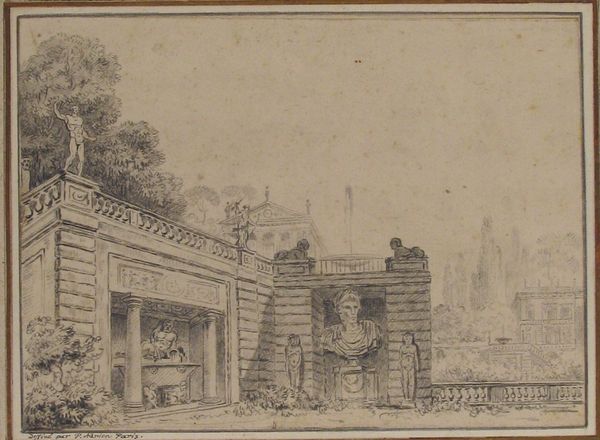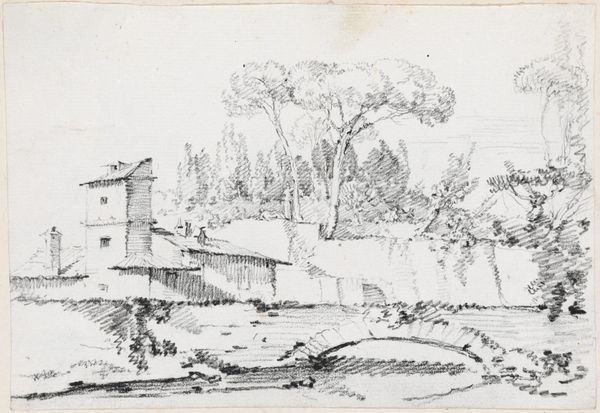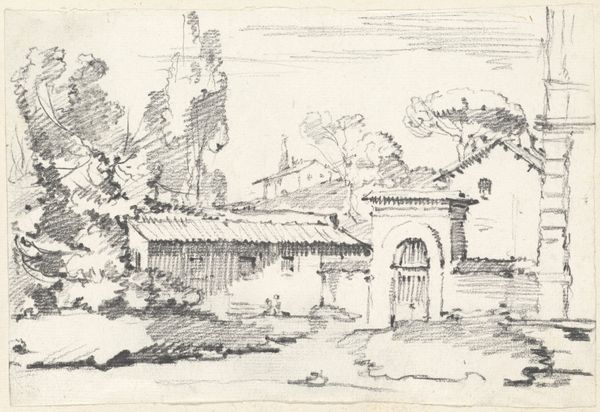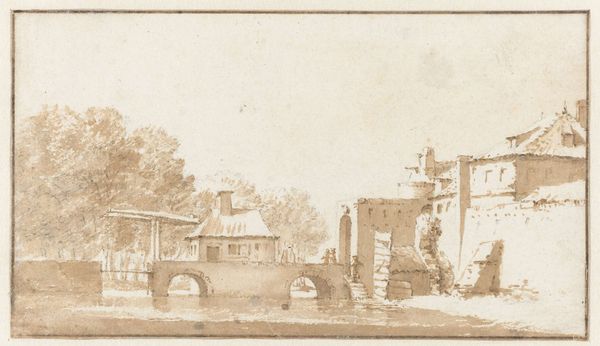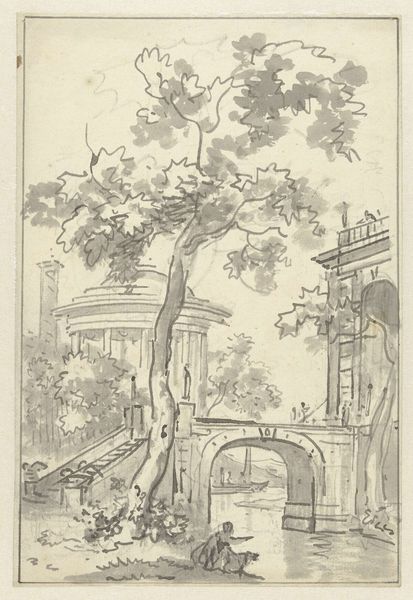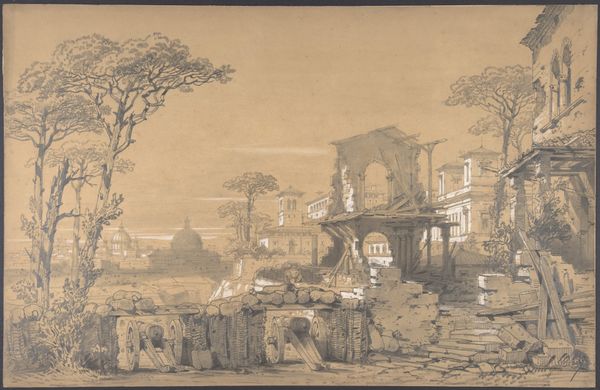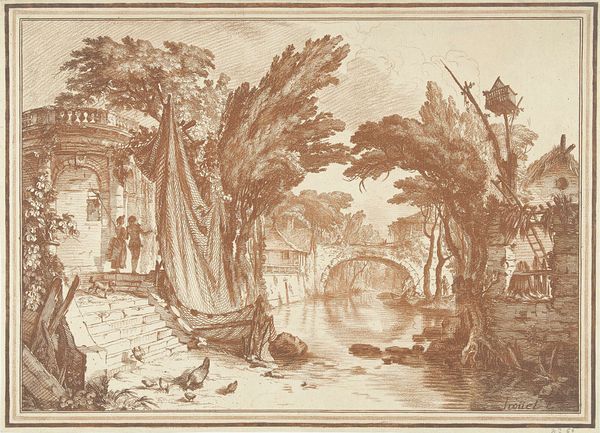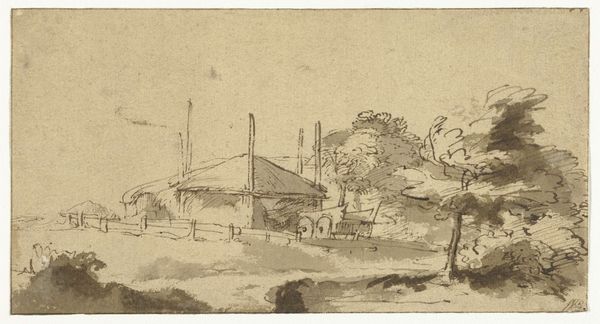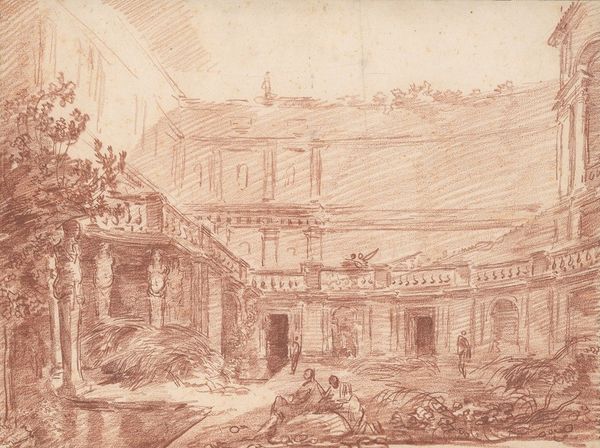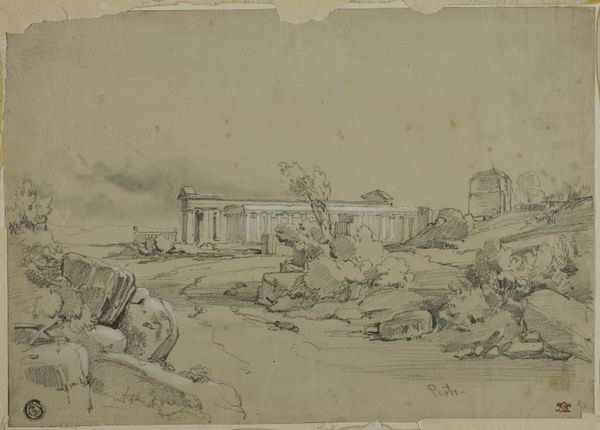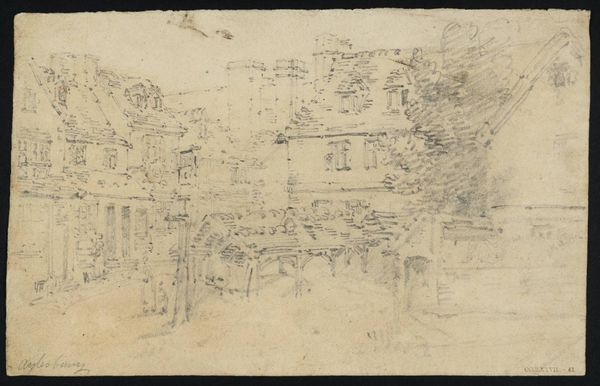![[title not known] by George Chinnery](/_next/image?url=https%3A%2F%2Fd2w8kbdekdi1gv.cloudfront.net%2FeyJidWNrZXQiOiAiYXJ0ZXJhLWltYWdlcy1idWNrZXQiLCAia2V5IjogImFydHdvcmtzL2ZlYzg4M2ZlLWEwNzAtNGZlYi1hOWQ0LWIxMWFhMGJiZmY5Yy9mZWM4ODNmZS1hMDcwLTRmZWItYTlkNC1iMTFhYTBiYmZmOWNfZnVsbC5qcGciLCAiZWRpdHMiOiB7InJlc2l6ZSI6IHsid2lkdGgiOiAxOTIwLCAiaGVpZ2h0IjogMTkyMCwgImZpdCI6ICJpbnNpZGUifX19&w=3840&q=75)
Dimensions: support: 211 x 289 mm
Copyright: CC-BY-NC-ND 4.0 DEED, Photo: Tate
Editor: This drawing by George Chinnery shows a waterside scene; it’s undated, but likely from the early 19th century. The boats and architecture suggest a place in Asia. What can you tell us about the materials used to create this? Curator: The sepia wash and pen and ink reveal much about Chinnery’s process and the demands placed on artists operating in colonial contexts. Consider the availability of materials; he used what was portable and accessible. How do these limitations shape our understanding of artistic labor during this period? Editor: That's an interesting idea, it makes me look at the drawing differently. So, the choice of materials wasn't just artistic, but also practical? Curator: Precisely. It also raises questions about the intended audience and the market for such works. Was it intended for personal reflection or as a commodity within a colonial system? Editor: I see. By thinking about the materials, we also start to understand the artist’s world. Curator: Exactly! It re-frames our appreciation.
Comments
tate 6 months ago
⋮
http://www.tate.org.uk/art/artworks/chinnery-title-not-known-t08787
Join the conversation
Join millions of artists and users on Artera today and experience the ultimate creative platform.
tate 6 months ago
⋮
Chinnery was one of the few British artists to work in the Far East and was quite exceptional in settling there permanently. He lived in China from 1825 until his death. This album of drawings contains scenes in India, where Chinnery had worked from 1802 until 1825, as well as Hong Kong and Macao. He specialised in portraits and paintings of everyday scenes. Despite living for many years in China Chinnery, like almost all westerners, actually travelled in only a small part of the country. Most of his paintings and drawings show scenes in Macao or Canton. Gallery label, September 2004
